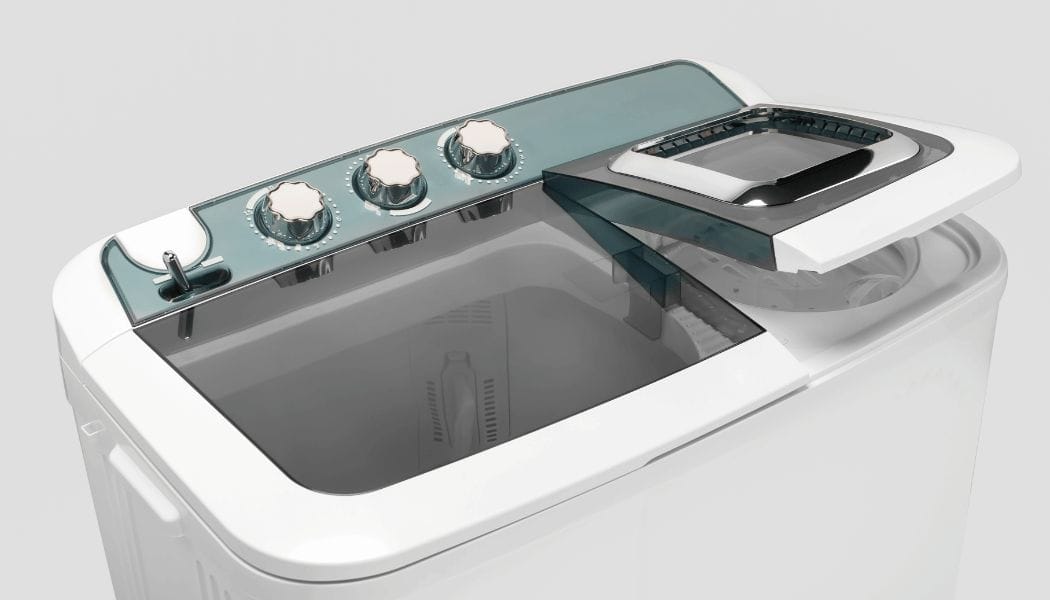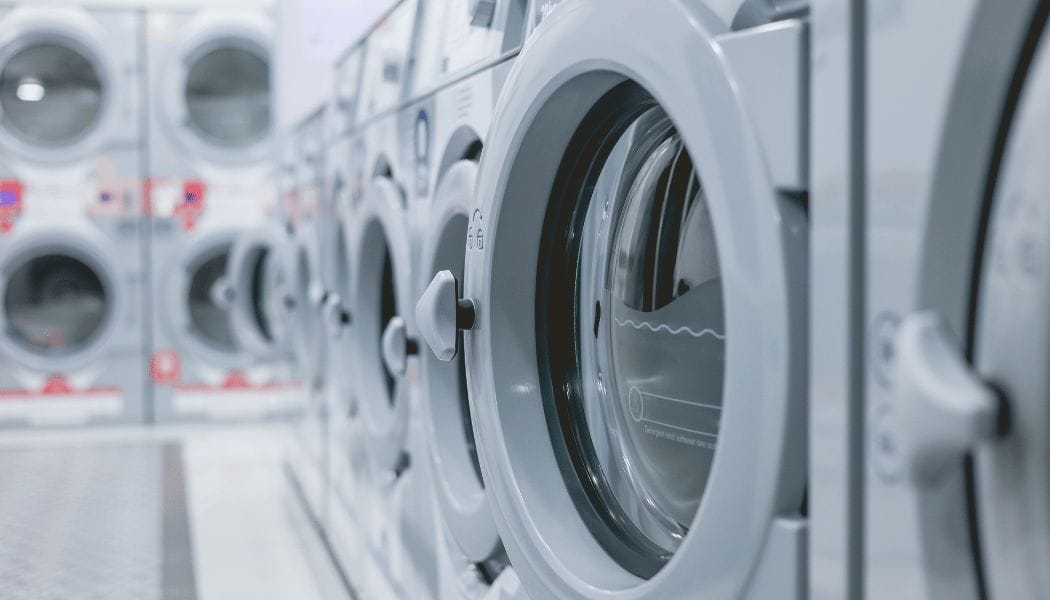How to Choose the Right Washing Machine for Your Home
This blog serves as a professional washing machine guide to help you choose the best kind of washing machine for your household. Let's take a look!

Introduction
In this world full of machines and complicated explanations about their features, it is okay to sometimes zone out when the salesman is blabbering on about what the washing machine they are trying to sell you can do. It really is okay. So many terms, like RPM, drum material, capacity, and power supply, can weaken a person's will, even if it is just a little.
In this blog, we are going to help you with exactly this. What everything in a washing machine user manual means and how to choose the right one for your home. Let's go!
The two types of washing machines are:
Okay, if we have to explain this, you are either a 3-year-old or a person who was separated from their jungle tribe. However, there are two types of washing machines, namely, semi-automatic and fully automatic (or just automatic) washing machines. Now, we will get into the specifics:

Semi-Automatic Washing Machines:
These are what you might want to start with if you really are from a jungle tribe. The operation of a semi-automatic washing machine is essentially very simple. It ideally contains two tubs, one for washing and one for drying. Which means it requires human intervention to do its thing, just that it is way easier and more effective than hand washing.
Manual labor, like turning on the tap and putting the washed clothes from the washing tub into the dryer after each wash, is what makes this type of washing machine a pain. But they are way cheaper than a fully automatic washing machine and are a great workout too if you are still regretting that you have not worked towards that new year resolution of yours. The specifics about the internal parts still apply to both semi-automatic and automatic washing machines in the same way, so don't worry about that until later in the blog.

Fully automatic washing machines:
I guess it's pretty clear from the name itself. Well, of course, they are not robots, but they help humans save a lot of precious time by taking care of the entire process of washing, rinsing, and drying by themselves and letting their master know with a small "beep" or "beep beep" or "beep beep beep...". Yes, beep is the only language they know.
The only human interaction needed here is only during loading clothes into them and when you need to take them out and put the next load of dirty laundry in. Unlike semi-automatic washing machines, they do not have two drums, but only one which does the work of both – washing and drying. They have multiple wash settings to choose from, be it gentle wash for softer clothes or getting large blankets washed with a dedicated blanket mode. But, it is important to know your needs before choosing which washing machine you want. You might need a blanket washing feature, but surely not a self-destruct feature, you know what we mean?
They come in two types too – the front-load and top-load washing machines. Each having their own pros and cons.
1) Front-load washing machine: The drum or tub in this type of washing machine is fixed in a horizontal way, which means you might have to put your spine into it. On the brighter side, you can stack clothes on top of each other, utilizing the maximum capacity of the washing machine. Because of its horizontal tub, it is able to spin at higher speeds in comparison to a top-load washing machine, and it uses less water per load. You can save water and also just sit and watch the drum spin through a glass window—a great place to ponder some forgotten memories.
2) Top-load washing machine: Throw your clothes in from the top into their vertical tub, close the lid, select the wash mode, and press a button. Deep water washing ensures better soaking, and the tub placement makes it convenient to take out the washed and dried clothes. Just like a front-loading machine, these can also detect water levels and decide how much water and detergent to use in accordance with the weight of the clothes with advanced sensors and high-tech washing programs. They come with preset washing routines to aid in any of your washing needs.
What to keep in mind when selecting a washing machine of any kind?
These are the major features you might want to ask about when you are shopping for your ideal washing machine:
1) The drum material: Washing machines can have any of these three types of tubs: plastic, porcelain-enamel, or stainless steel. Most modern washing machines are equipped with stainless steel drums, as they are long-lasting, rust-free, able to handle the torque produced by the motor, and very durable compared to plastic or porcelain drums. So, make sure you get a washing machine with a stainless steel drum.
2) Wash settings: Modern washing machines let you choose or even customize your preferred wash mode. A variety of these washing modes are available ranging from quick wash mode to hand wash mode. If you own a lot of frail clothes, then you must get a washing machine with a gentle wash mode, or if you are a person who wears a lot of jeans and tough clothes, make sure the washing machine model has a mode to handle the load.
3) Maximum RPM of the motor: How do you tell if a washing machine is good or not from the foundation? The answer would depend on how powerful the motor is. There are a lot of motors available on the market, but they are all ranked in order of how much RPM (Rotations Per Minute) they produce. For lighter clothes, an RPM of 300–500 would suffice, whereas for heavier and thicker materials like jeans, you would need a motor that can produce at least 1000 RPM.
4) Power Consumption: One of the most important things you need to know before purchasing a washing machine is how electricity efficient it is. The industry standard way of being able to see this is through the 5 star energy rating system. A washing machine with a 4 or 5 star rating would save a lot of electricity in the long run, while the ones below this rating might bring your electricity bills up a notch.
5) Inverter Technology: The older washing machines used to be equipped with a traditional motor that caused a lot of vibrations, consumed more power, and would not last as much as the modern day motors. Fast forward to the present time, washing machines are equipped with a modern inverter motor that uses less electricity, causes little to no vibrations and usually last for 10-15 years depending on usage.
6) Capacity: The capacity of a washing machine is how many kilograms of clothes it can wash in one sitting. It can range from 5 kgs to 12 kgs usually. Approximately, a 6kg washing machine can handle 4 shirts, 4 pants, 1 bedsheet and two towels, whereas a larger 10 kg washing machine can handle up to 9 shirts, 9 pants, 5 bedsheets and 8 towels, which is ideal for a larger family with more than 4 members. Analyze your family needs and compare them to make a well-informed decision on the washing machine you have planned to buy.
Conclusion
Key factors to take into account when delving into the specifics of a washing machine user manual are the type of drum, wash settings, motor maximum RPM, power consumption, inverter technology, and capacity. Making an informed decision involves using inverter technology, evaluating motor RPM based on laundry types, embracing stainless steel drums, choosing machines with adjustable wash settings, assessing energy ratings, and determining the appropriate capacity for your home.
Ultimately, making an informed decision helps to save energy and ensure long-term durability in addition to ensuring effective laundry management. Therefore, the process of understanding washing machine features—whether they are fully automatic or semi-automatic—becomes more informative and empowering, assisting you in making the best decision for your home. A toast to happy laundry!




Comments ()